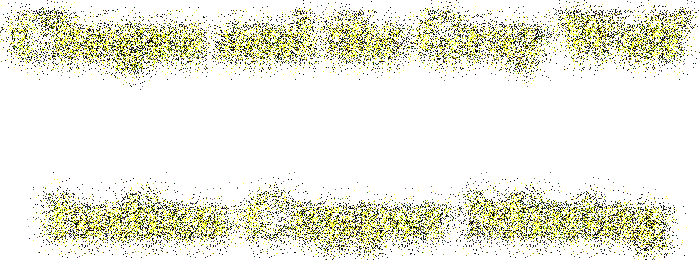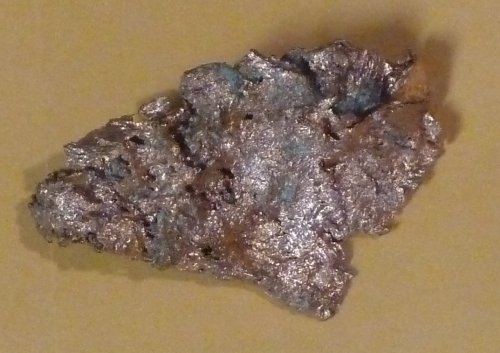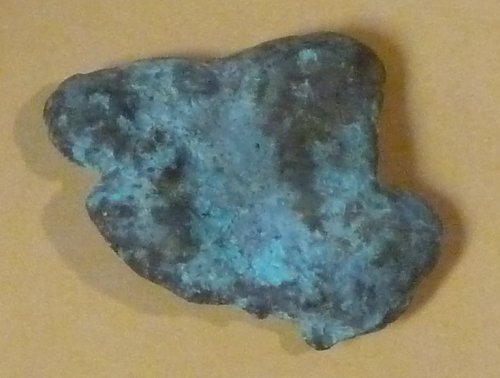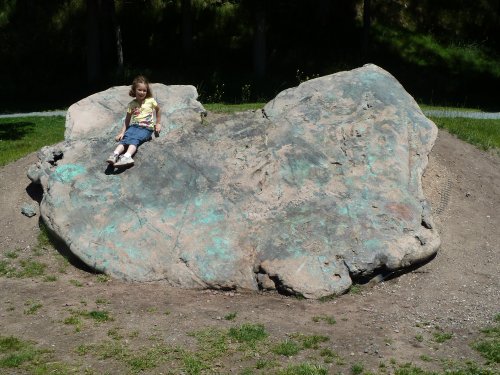


If you are inquisitive like Chogan, you are probably wondering who carved out the cave Chogan discovered. The ancient miners left little evidence of their existence other than the thousands of abandoned copper mines and the hammer stones they used to break copper from the bedrock. Some people with vivid imaginations have speculated that Vikings, Phoenicians, or even people from outer space were responsible for these copper mines, but all rational evidence points to Chogan’s ancestors. With no written history, it is understandable that Grandfather knew little of these people.
Copper Mine
Most of the copper mines were no more than pits in the ground similar to the abandoned copper mine pictured at the left. A horizontal shaft into the side of a cliff similar to the one Chogan found would be a rarity. Debris and dead vegetation gradually filled the mines over the centuries, and today most of the mines are only a few feet deep. Carbon dating of the decayed vegetation at the bottom of the mines has confirmed that some of these mines are over 7,000 years old; that is 4,000 years older than the Egyptian’s first pyramid.
Placer Copper

Copper dug from mines is called placer copper and is bright and shiny like the specimen at the right. The edges are highly irregular and sometimes feathery. Placer copper will look similar to a new penny. The Keweenaw Peninsula in Northern Michigan is one of the few places on earth that copper can be found in such purity.
Float Copper

Thousands of years ago glaciers covered the Great Lakes area. As the glaciers advanced, they dug placer copper from the ground and then pushed the copper across the region. Abrasion transformed the irregular edges of the placer copper into well-rounded margins. Once the copper was exposed to air, its surface tarnished to a bluish-green color. Geologists call this float copper, not because it can float on water (it can’t), but because the glaciers made it float across the earth’s surface. The specimen at the left is an excellent example of float copper. Note the smooth edges and bluish-green tarnish. Even placer copper like Chogan’s enchanted arrowhead will tarnish to this color when exposed to the air for a long period.
World's Largest Float Copper

At the right Rory is dwarfed by the world’s largest known float copper specimen. (Note the bluish-green tarnish.) The solid copper rock measures over fifteen feet in longest diameter and weighs-in at 28.2 tons. Top soil partially buried the float copper until its 1997 discovery in Hancock, Michigan. The specimen is now on display at Presque Isle Park in Marquette, Michigan. The Ancient Artifact Preservation Society hopes to raise enough funds to purchase the stone and make it a permanent display.
So what do you think Chogan will do with his enchanted arrowhead? Knowing Chogan, I am sure he will use it wisely.
Return